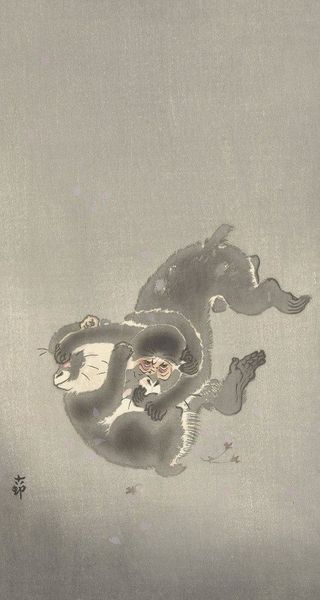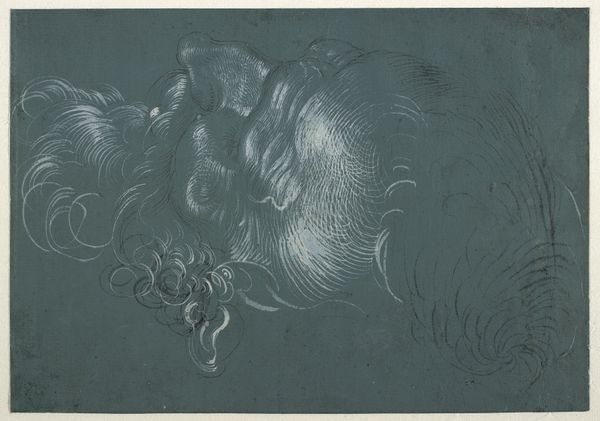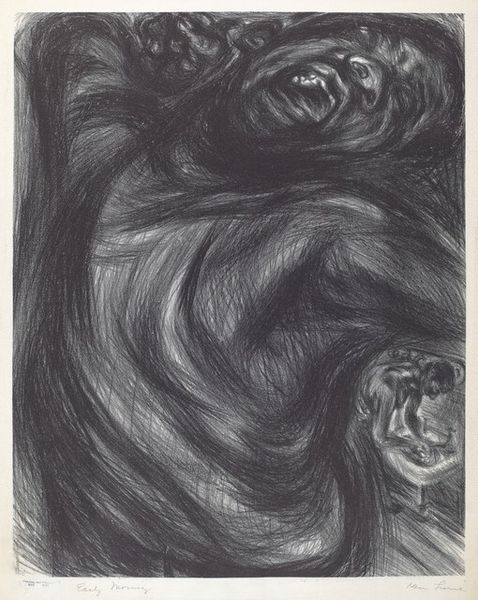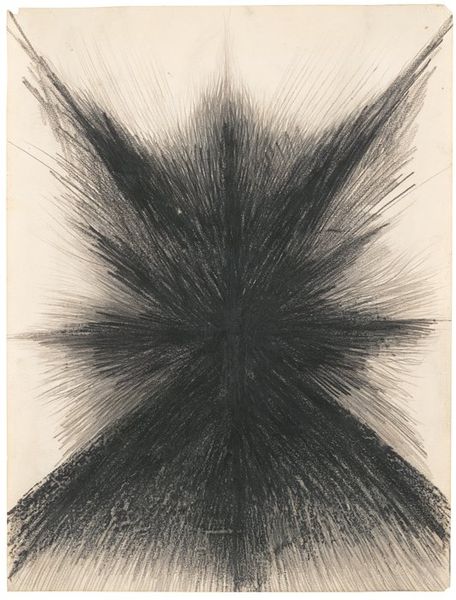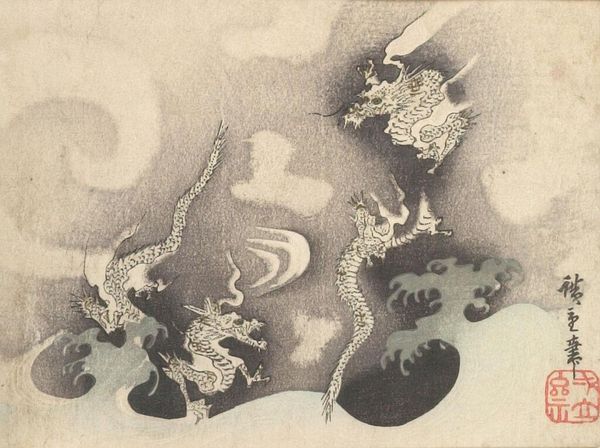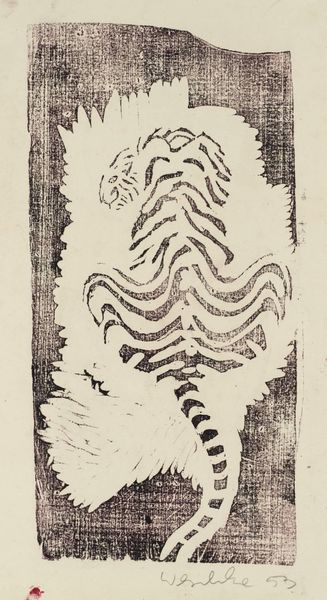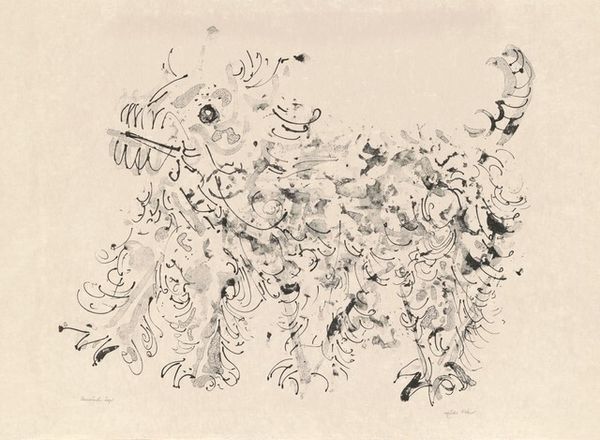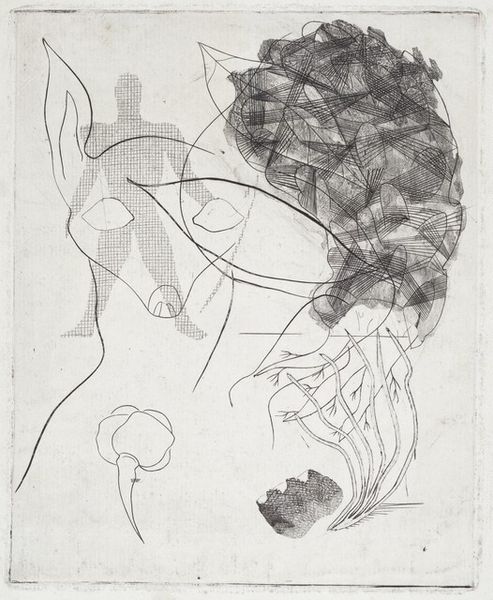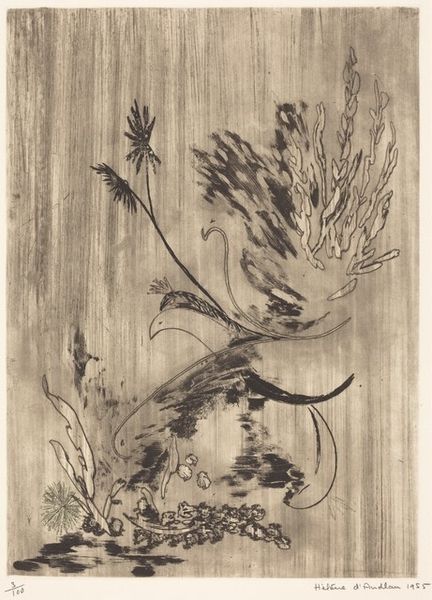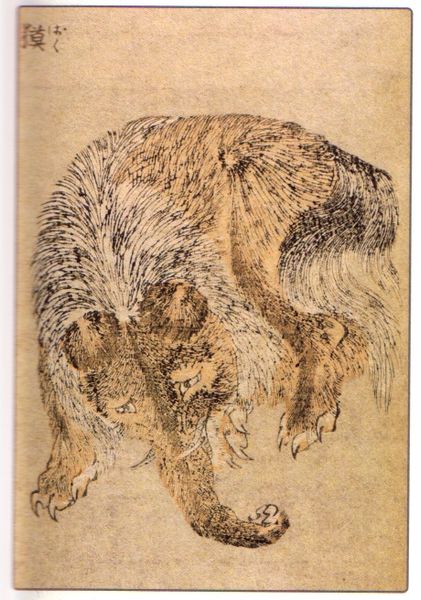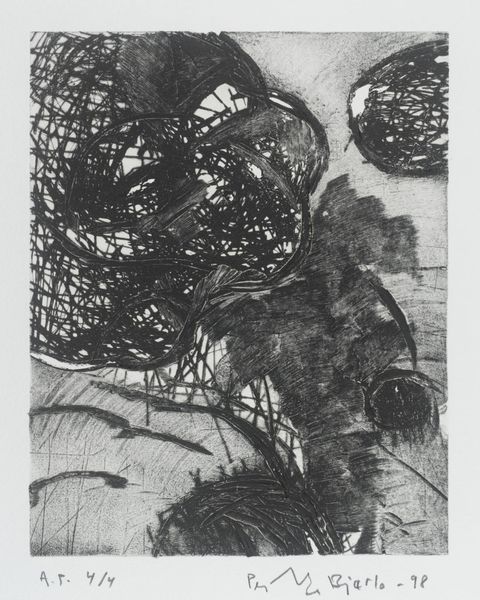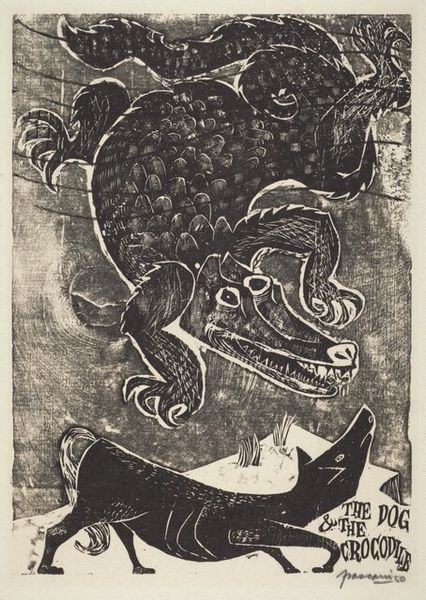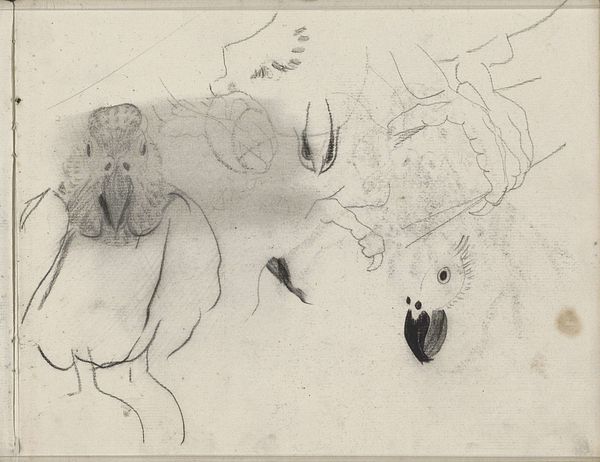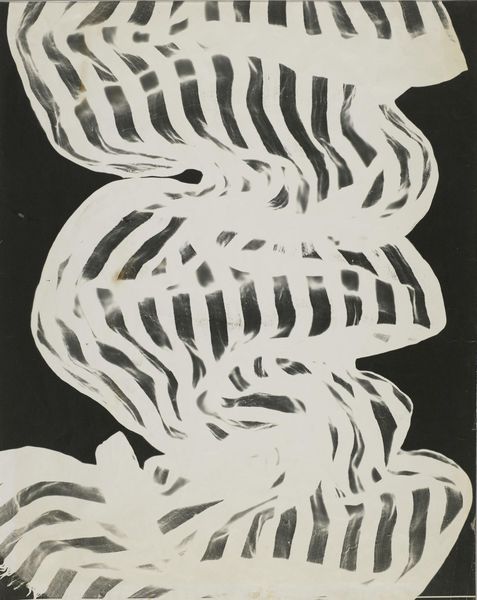
drawing, ink
#
gouache
#
drawing
#
animal
#
dog
#
figuration
#
ink
#
geometric
#
line
#
futurism
Dimensions: 91 x 110 cm
Copyright: Public domain US
Curator: Giacomo Balla's 1912 gouache, ink, and pencil work, "Dynamism of a Dog on a Leash," now residing at the Albright-Knox Art Gallery, immediately strikes one as a study in motion. Editor: My first impression is playful, but almost dizzying! The repeating forms of the dog's legs and the woman's feet are really interesting and create this overwhelming sense of movement. It feels like a blurred photograph trying to capture action. Curator: Balla, aligned with the Futurist movement, was obsessed with capturing speed and motion. He achieves this by layering the forms. One could argue that Balla is highlighting how even simple, everyday actions involved mechanical and industrial advancement by using such method of capturing its essence. Editor: Absolutely, and looking at the materials reinforces that. Gouache, ink, pencil - these aren't high-art, heroic materials like bronze or marble. It reflects Futurism's focus on the mundane, bringing the avant-garde to street-level subjects, while simultaneously pushing past traditional notions of movement that pre-existed photography. There’s something very class-conscious in this subject. Curator: In essence, Futurism sought to challenge the old guard by embracing modernity through things such as emphasizing industrial materials. This focus then becomes further integrated in subject matter as we see Futurists creating a new narrative around labor. How can we relate it? Take Balla's use of repetition – you could view this stylistic feature and material, to represent how repetitive our everyday experiences were becoming due to the increase in automation. Editor: Yes! Consider that the image itself becomes a signifier for progress and a critique of class and industrial change at the time. Who gets to move freely, and who is tethered, or trapped, even? It is literally portrayed in a woman taking her dog for a walk and suddenly those ideas can be seen in plain sight. Balla is depicting a kind of staccato rhythm of urban life. This, coupled with the Futurist leanings toward rejecting tradition, gives the everyday a jolt of radical politics, doesn't it? Curator: It does indeed. I suppose what initially appeared as a somewhat quaint depiction of a leisurely walk reveals deeper insights into Futurism's artistic vision and social critique through innovative modes of production. Editor: Ultimately, it prompts us to rethink not only how we perceive art, but also how we engage with broader societal issues of representation through time, medium, and materials.
Comments
No comments
Be the first to comment and join the conversation on the ultimate creative platform.
